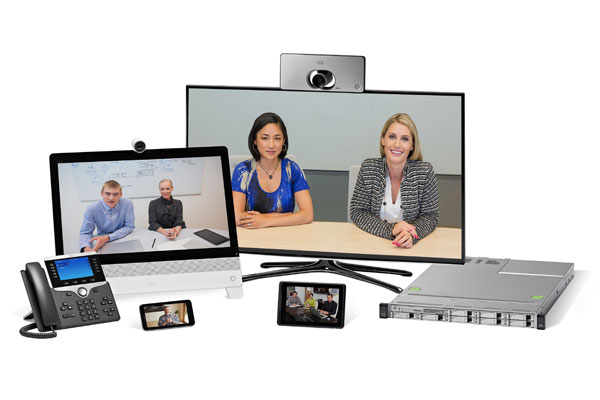● Maximum 450 phones per system
● Up to 34 line appearances per phone
● Attendant console functions using Cisco Unified IP Phone Expansion Module 7915 and 7916 modules
● Fast transfer: Blind or consult
● Distinctive ring per line
● Automatic line selection for outbound calls
● Call forward on busy, no answer, and all (internal or external)
● Call-forward-all restriction control
● Feature ring with DND set
● IP phone display of DND state
● Dial-plan pattern load on SIP phones
● Diversion of calls directly to voicemail
● Customization of soft keys
● Enable and disable call-waiting notification per line
● Call waiting with overlay directory number
● Dual or eight call line appearances per button
● After-hours toll-bar override
● Auto answer with headset
● European date formats
● Hook flash pass-through across analog PSTN trunks
● Idle URL: Periodically push messages or graphics on IP phones
● Last-number redial
● Live record to Cisco Unity Express mailbox
● Local name directory lookup
● On-hook dialing
● Station speed dial with configuration changes from IP phone
● System speed dial for 10,000 numbers
● Silent and feature ring options
● SIP-based line-side subscribe, providing basic presence of phone status
● Transfer to voicemail soft key
● Call barge with privacy on shared lines
● Access features using soft keys or feature access codes
● Remote teleworker IP phone support
● Dynamic hunt-group join or leave
● Support for analog phones using Cisco ATA 186 Analog Telephone Adaptor or Cisco VG224 Analog Voice Gateway in SCCP mode
● Support for fax machines on foreign-exchange-station (FXS) ports or ATA using H.323, SCCP, or SIP
● Support for Cisco VG202 and VG204 Analog Voice Gateways
● XML application services on Cisco Unified IP display phones
● Station-to-station video with voice using Cisco Unified Video Advantage or Cisco Unified IP Phone 7985G endpoints
● Extension mobility within the single site
● Wideband audio (G.722) and Internet low bit rate codec (iLBC)
● Single number reach for mobility in Cisco IOS Software
● Whisper intercom
● Shared line on SIP phones with privacy and barge-in capabilities
● Customizable phone telephony user interface (TUI) with button layout control
● Improved security with customizable services and directories page
● Programmable line keys (PLK) on Cisco IP Phone TUI
● My Phone Apps support for BLF speed-dial configuration
● Normalized +E.164 support for Cisco Unified IP Phones (SCCP)
● Support for Cisco Mobile 8.1 for iPhone and iPod touch soft-phone client
● Secure Sockets Layer (SSL) VPN client support for Cisco IOS Datagram Transport Layer Security (DTLS) VPN for SCCP phones
● Localization support for Cisco Unified IP Phone 7920 and 6900 models with SCCP
● Video and camera support for Cisco Unified IP Phone 8961, 9951, and 9971 models
● Extension Mobility support for SIP endpoints
● Support for Cisco Unified IP Phone 8941 and 8945 endpoints
● Support for Single Number Reach and paging for SIP endpoints
● Support for shared line between SCCP and SIP endpoints
● My Phone App support for SIP endpoints
● Support for Cisco ATA 187, ATA 188 and ATA 190 Analog Telephone Adapters
● Support for SIP-initiated conference
● Support for visual list of parked calls
● Support for visual list of voice hunt groups
● Support for dynamic hunt-group login
● Support for distinctive ring for parked call recall
● Support for audible ringtone with hunt-group login and logout
|


